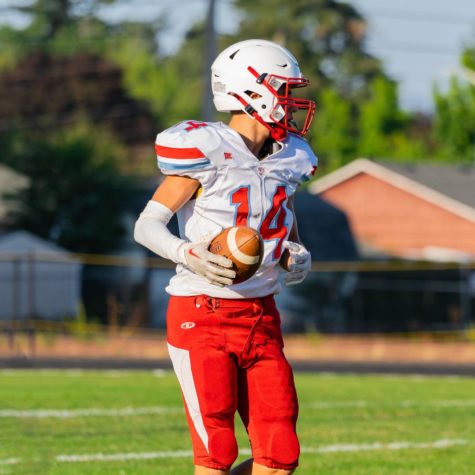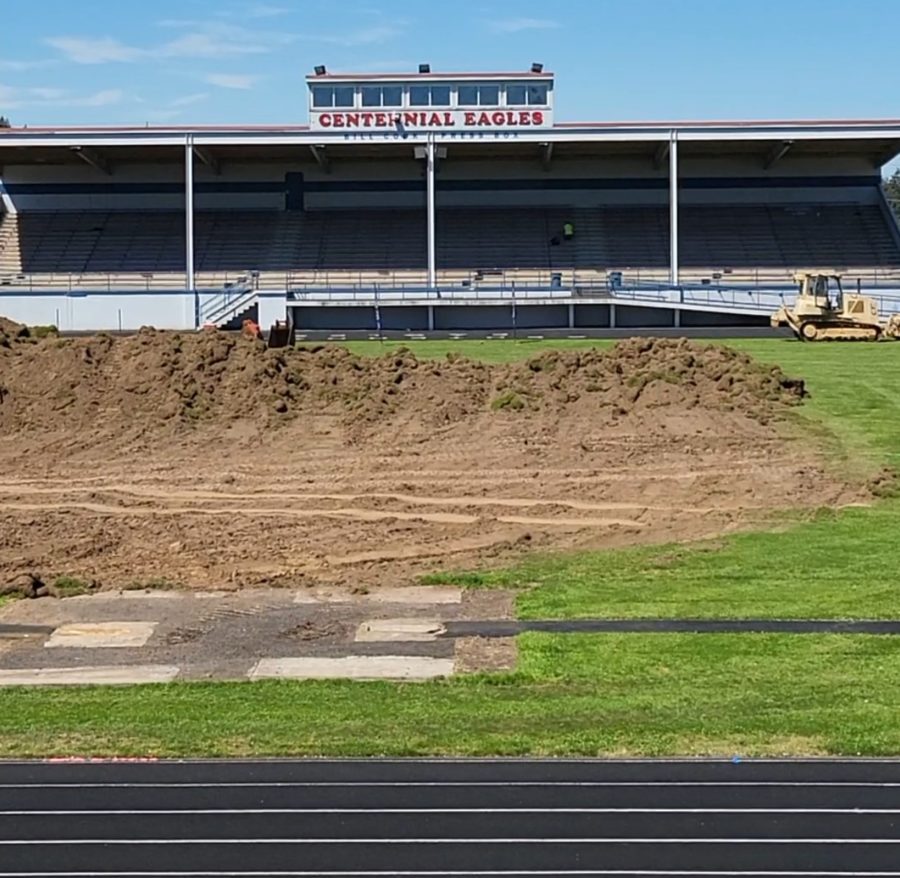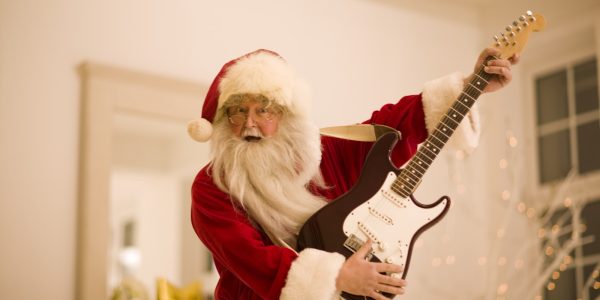New Athletic Field Under Construction
Shortly after Track and Field hosted their last home meet, Centennial started excavation on their football field. Since its construction, Centennial’s grass field hasn’t changed. Football and soccer athletes have asked for a turf field for a long time. In the US, the majority of high schools use artificial turf fields. While many have turf, there’s a portion of schools who still use grass. There are many pros and cons for a turf field. Centennial, being located in Oregon and being one of the more rainier states, having turf is essential to an athlete’s experience.
Turf is used by most schools in our region for a variety of reasons. Being able to play in the rain is one of the biggest benefits. Fall and Spring sports are generally more tough in Oregon. With cold weather and heavy rain, many athletes find it a struggle. Most schools invest in turf for this exact reason. Trying to run for long periods of time on wet, muddy, and slippery grass isn’t the easiest thing to do, athletes say. The mud also stains clothes and is very cold to the touch.
Another reason why turf is so popular is the feel of it. Turf has an artificial grass top with a harder bottom. Natural grass, if well taken care of, is similar but softer. When you run on grass, the dirt and grass mold around your feet and constantly change its shape, making it slippery to run on even if it isn’t wet. Turf however, stays in place and since it doesn’t shape to your feet, it hurts more to step on. The reason why many athletes love this feeling is it gives athletes traction. Since it doesn’t make you slip, you can turn in different directions quicker and sharper compared to grass. The bad thing about this type of field is since the turfs materials are more rough, it will give you a pretty bad burn if slid or landed on the wrong way.
Turf also has other negative attributes. When in very sunny weather, the turf can reach up to 180 degrees fahrenheit! Grass doesn’t do this because it releases water vapor, cooling it. Grass almost never goes above 100 degrees fahrenheit. Another reason turf is questionable by many is the loads of injuries it causes. Grass will eventually give, releasing the cleat, prior to releasing an injurious load. Turf however, has less give, so our feet, ankles, and knees absorb the force. This causes more non-contact injuries to athletes. These can be serious like Acl tears. If torn fully, surgery is required and can take up to 2 years to fully recover.
Overall, turf fields have many positive and negative attributes. It can vary from athlete to athlete with what they prefer. During the wet season in a rainier state, turf is usually recommended for athletes to provide the best experience, but many schools still don’t use it because of the big cost for it and the injuries it provides. Still, further research on it needs to be done to try and make turf as safe as possible for all athletes to enjoy and be safe!

Tim is a 9th grader new to Journalism. He enjoys writing about sports and also writes fiction from time to time.






